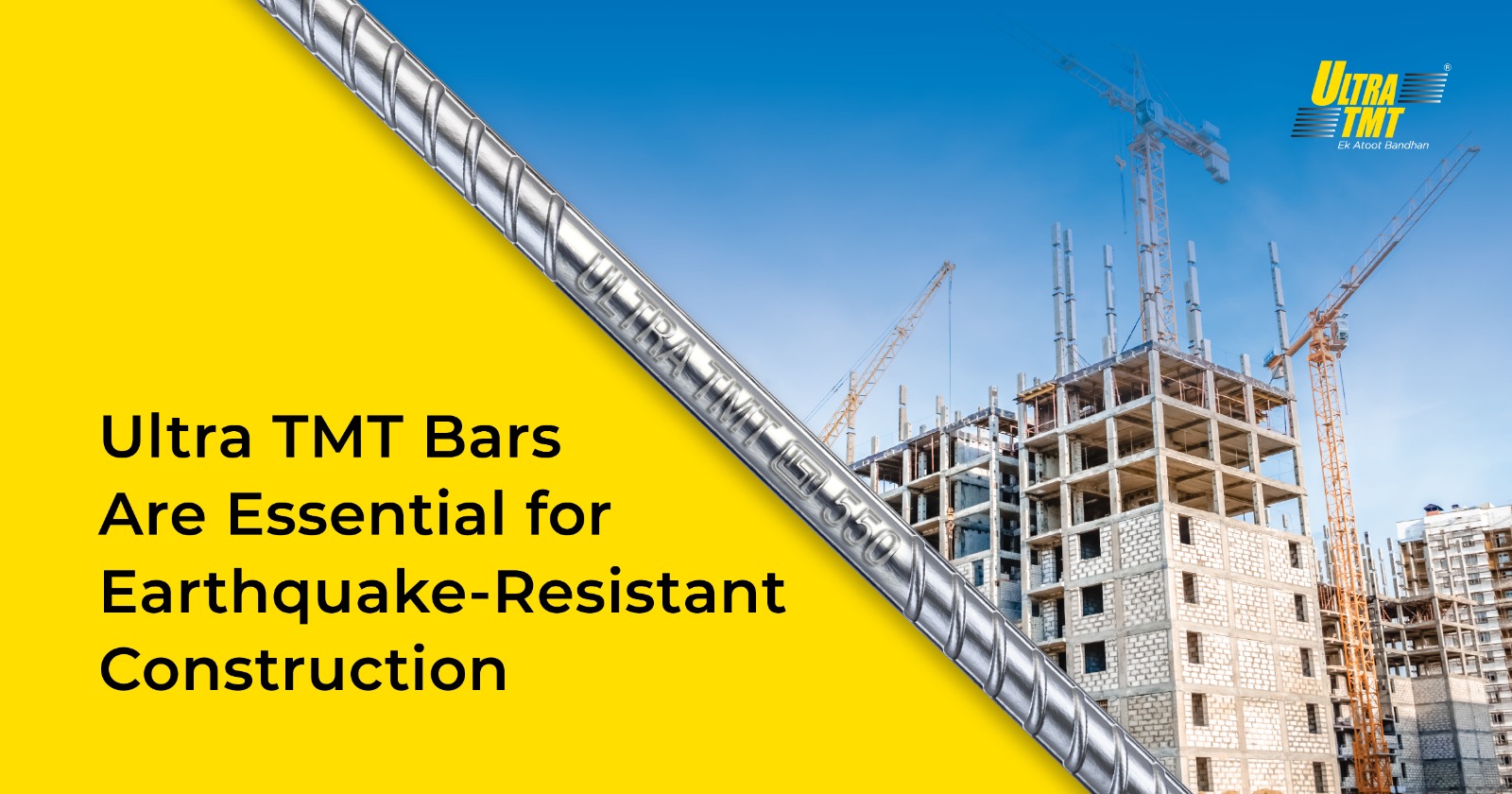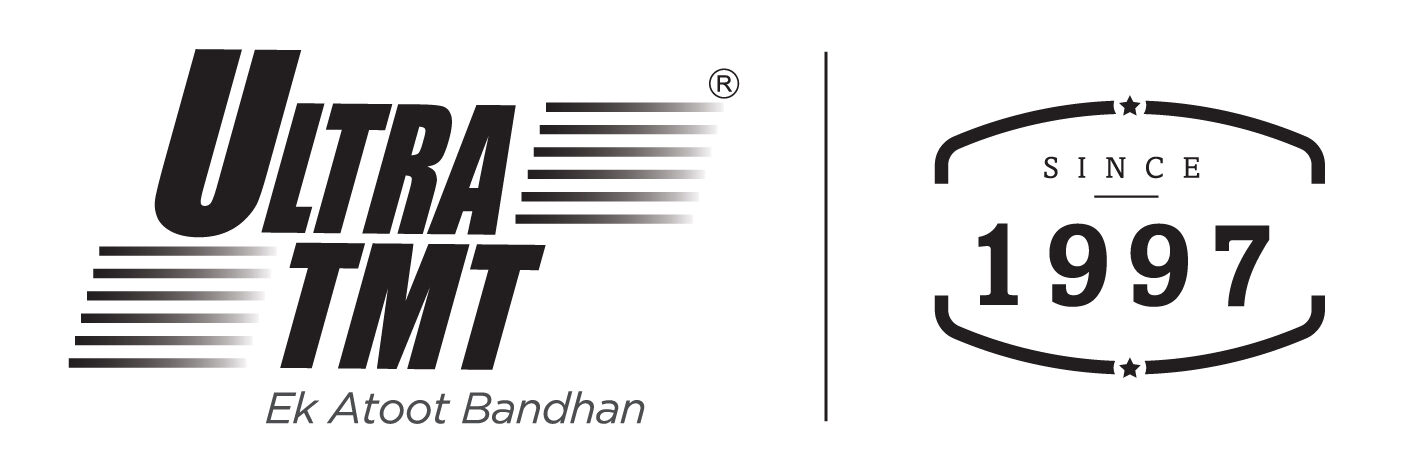

Earthquakes, as formidable forces of nature, pose significant threats to life and infrastructure. The key to mitigating the catastrophic impact of seismic activity lies in the construction of earthquake-resistant structures, wherein the choice of materials becomes paramount. Among these materials, Ultra TMT, which is among the best TMT bars, stands out for its exceptional strength, ductility, and flexibility, making them indispensable for ensuring the safety and resilience of buildings in earthquake-prone regions.
Why TMT Bars are Essential for Earthquake-Resistant Construction
Understanding the Dynamics of Earthquakes:
The Significance of Ultra TMT Bars:
- Exceptional Strength:
Ultra TMT bars are manufactured using a specialised process that imparts remarkable strength to the steel. This strength is vital for withstanding the intense forces generated during an earthquake.
- Ductility:
Ultra TMT bars are manufactured using a specialised process that imparts remarkable strength to the steel. This strength is vital for withstanding the intense forces generated during an earthquake.
- Flexibility:
More flexible than traditional steel bars, Ultra TMT bars adapt to the dynamic and unpredictable nature of seismic forces without compromising structural integrity.
- Elongation:
TMT bars, with their high elongation index, handle inelastic strains better during earthquakes, minimising damage to buildings by effectively absorbing shocks.
- Reduced Brittle Behaviour:
Unlike conventional steel bars, Ultra TMT bars exhibit reduced brittle behaviour, making them less susceptible to fracturing during earthquakes and ensuring the building's structural integrity.
- Integral to Reinforcement:
TMT bars are integral to reinforced concrete frames and seismic bracing systems, providing the necessary tensile strength to counteract bending and shearing forces during seismic activity.
- Compatibility with Reinforced Concrete:
Commonly used in reinforced concrete structures, TMT bars offer the tensile strength needed to counteract bending and shearing forces resulting from seismic motion.
- Rib Pattern:
The rib pattern of TMT bars ensures a strong bond with concrete, making them shockproof and capable of preventing earthquake shocks on a more extensive scale.
Conclusion:
FAQ
The difference between a TMT bar and a normal bar is the composition and strength. TMT (Thermo-Mechanically Treated) bars are manufactured by subjecting them to a combination of heat treatment and mechanical processes, which enhances their strength and ductility. This process involves quenching the bars in water after they are heated to a high temperature, followed by self-tempering. As a result, TMT bars exhibit superior tensile strength, elongation, and corrosion resistance compared to normal bars. Additionally, TMT bars have a soft ferrite-pearlite core and a tough outer martensitic layer, which contributes to their improved seismic resistance and structural integrity. In contrast, normal bars do not undergo such specialized treatment and have relatively lower strength and durability. Hence, in construction projects which require high quality reinforcement, TMT bars are widely preferred for their superior mechanical properties and ability to withstand seismic forces.
Several factors need to be considered while identifying the best TMT bars. Firstly, it is crucial to assess the brand reputation and credibility of the manufacturer. Look for renowned brands that have a proven track record of delivering high-quality TMT bars. Secondly, consider the grade and certification of the bars. Look for bars that comply with national and international standards, such as IS 1786:2008 for India or ASTM A615/A615M for the United States. Thirdly, evaluate the manufacturing process. The best TMT bars are produced using advanced technology and adhere to strict quality control measures, ensuring uniformity and consistency. Additionally, check for features like rib patterns, which enhance the bond strength with concrete. Lastly, consider factors such as corrosion resistance, elongation, and yield strength, as they determine the overall durability and performance of the TMT bars. By carefully considering these factors, you can identify the best TMT bars that meet your specific construction requirements.
TMT bars, or Thermo-Mechanically Treated bars, have a wide range of uses in the construction industry. They are primarily used for reinforcing concrete structures to provide strength and durability. TMT bars are commonly used in the construction of buildings, bridges, dams, flyovers, and other infrastructure projects. Due to their high tensile strength, they effectively withstand heavy loads and seismic forces, making them ideal for earthquake-prone areas. TMT bars are also corrosion-resistant, ensuring the longevity of structures even in harsh environmental conditions. Moreover, their superior bond strength with concrete enhances the structural integrity and stability of buildings. TMT bars are available in various sizes and grades, making them versatile for different types of construction applications. Overall, TMT bars are essential components in the construction industry, providing the necessary reinforcement to ensure safe and resilient structures.
